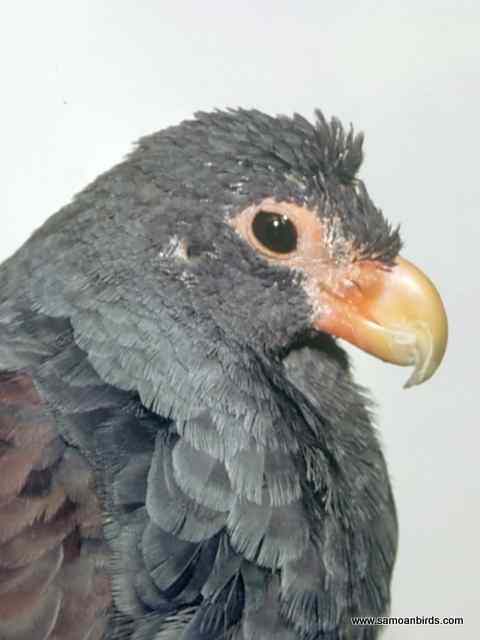| This article is incomplete. This article is missing one or more sections. You can help the BirdForum Opus by expanding it. |
Alternative name: Samoan Pigeon or Manumea
- Didunculus strigirostris
Identification
Length:34-38cm; Wingspan: 66cm. Stocky, with a large, hooked bill. Lower mandible has two teeth which overlap the upper. Plumage is chestnut, although the head and belly are greenish. Bill has a red/orange base, which pales to a yellowish tip. Bare reddish-ochre skin around eyes.
Immatures have a black bill. Quite unlike adults, with strongly barred black and chestnut, with a deep rufous tail.
Status: IUCN classes it as Endangered.
Distribution
Endemic to Savaii and 'Upolu Islands, Samoa.
Taxonomy
Classified as a pigeon, this is the only species of the Didunculus genus. Interestingly, Didunculus means "little dodo". It is believed that this pigeon is a close link between modern developed pigeons and the extinct Dodo.
Habitat
Rainforests at all elevations. Requires areas with no human interference. Since it feeds almost exclusively on Dysoxylum Spp. Mahagony trees, it lives where these trees are present. Prefers thick cover. It's heavy bill seems to have evolved to crack these seeds open.
Behaviour
Very shy and elusive. Captive birds do not do well, and are aggressive to other birds. Prefers native Dysoxylum spp. (bill can saw through seeds). May be overlooked, but natives attest that it is increasingly scarce since the cyclones.
Noisy take-off flight with a clattering of wings. Flight often ends with an extended glide.
Nothing is recorded of its breeding habits.
Voice: Low, booming co-OO, which is repeated slowly. Occasionally the second syllable is higher pitched. Calls always delivered from tree tops. Accompanied by a slight bow to the head.




